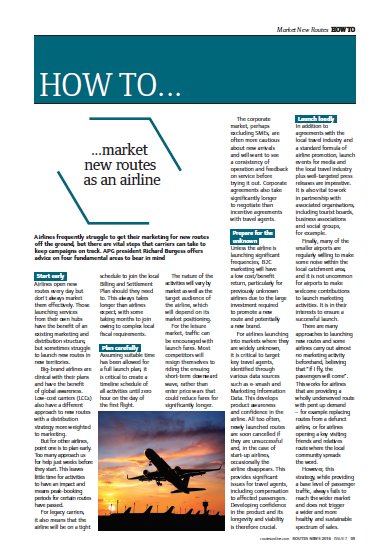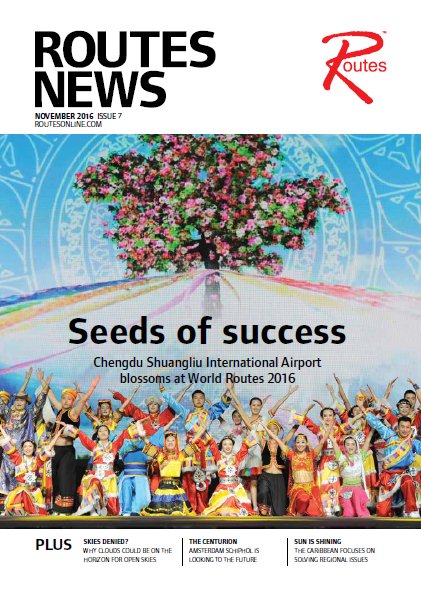Airlines frequently struggle to get their marketing for new routes off the ground, but there are vital steps that carriers can take to keep campaigns on track. In our regular Routes News series which aims to help the air service development community to better fulfill their jobs with guidance on industry trends and key topics, APG president Richard Burgess offers advice on four fundamental areas to bear in mind...
Start early
"Airlines open new routes every day but don’t always market them effectively. Those launching services from their own hubs have the benefit of an existing marketing and distribution structure, but sometimes struggle to launch new routes in new territories.
"Big-brand airlines are clinical with their plans and have the benefit of global awareness. Low-cost carriers (LCCs) also have a different approach to new routes with a distribution strategy more weighted to marketing.
"But for other airlines, point one is to plan early. Too many approach us for help just weeks before they start. This leaves little time for activities to have an impact and means peak-booking periods for certain routes have passed.
"For legacy carriers, it also means that the airline will be on a tight schedule to join the local Billing and Settlement Plan should they need to. This always takes longer than airlines expect, with some taking months to join owing to complex local fiscal requirements."
Plan carefully
"Assuming suitable time has been allowed for a full launch plan, it is critical to create a timeline schedule of all activities until zero hour on the day of the first flight.
"The nature of the activities will vary by market as well as the target audience of the airline, which will depend on its market positioning.
"For the leisure market, traffic can be encouraged with launch fares. Most competitors will resign themselves to riding the ensuing short-term downward wave, rather than enter price wars that could reduce fares for significantly longer.
"The corporate market, perhaps excluding SMEs, are often more cautious about new arrivals and will want to see a consistency of operation and feedback on service before trying it out. Corporate agreements also take significantly longer to negotiate than incentive agreements with travel agents."
Prepare for the unknown
"Unless the airline is launching significant frequencies, B2C marketing will have a low cost/benefit return, particularly for previously unknown airlines due to the large investment required to promote a new route and potentially a new brand.
"For airlines launching into markets where they are widely unknown, it is critical to target key travel agents, identified through various data sources such as e-smash and Marketing Information Data. This develops product awareness and confidence in the airline. All too often, newly launched routes are soon cancelled if they are unsuccessful and, in the case of start-up airlines, occasionally the airline disappears.
"This provides significant issues for travel agents, including compensation to affected passengers. Developing confidence in the product and its longevity and viability is therefore crucial."
Launch loudly
"In addition to agreements with the local travel industry and a standard formula of airline promotion, launch events for media and the local travel industry plus well-targeted press eleases are imperative. It is also vital to work in partnership with associated organisations, including tourist boards, business associations and social groups, for example.
"Finally, many of the smaller airports are regularly willing to make some noise within the local catchment area, and it is not uncommon for airports to make welcome contributions to launch marketing activities. It is in their interests to ensure a successful launch.
"There are many approaches to launching new routes and some airlines carry out almost no marketing activity beforehand, believing that “if I fly, the passengers will come”. This works for airlines that are providing a wholly underserved route with pent up demand – for example replacing routes from a defunct airline, or for airlines opening a key visiting friends and relatives route where the local community spreads the word.
"However, this strategy, while providing a base level of passenger traffic, always fails to reach the wider market and does not trigger a wider and more healthy and sustainable spectrum of sales."
 |
This article is modified from an original feature that appeared in... ROUTES NEWS - ISSUE 7, 2016 PLEASE CLICK HERE to view the magazine. |
 |





